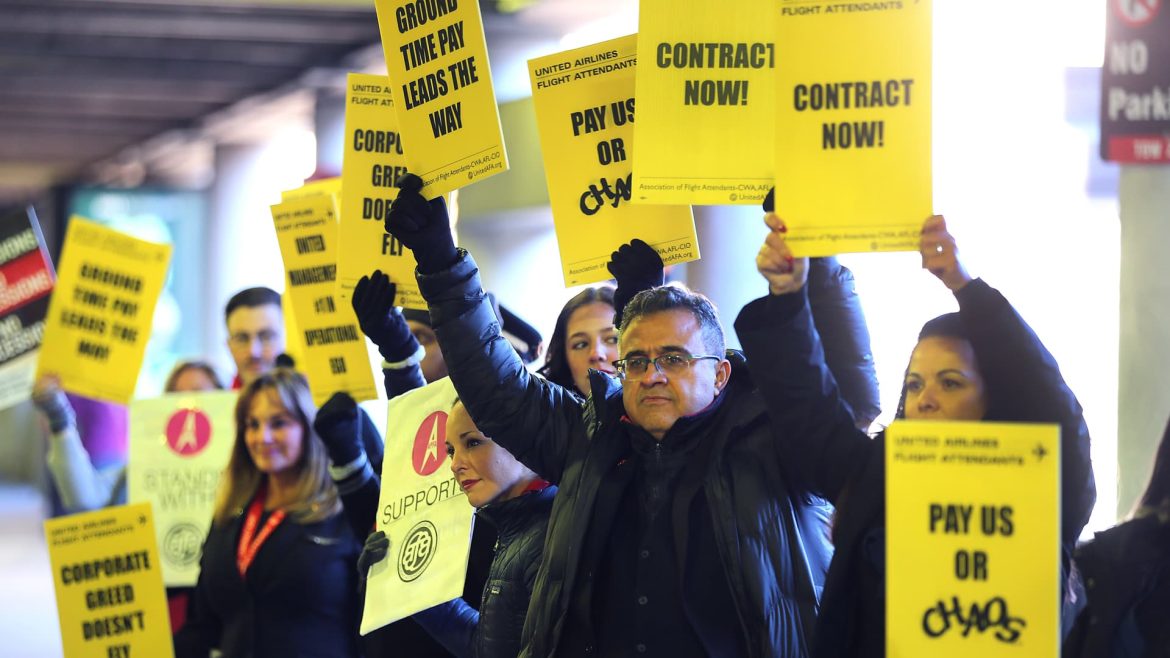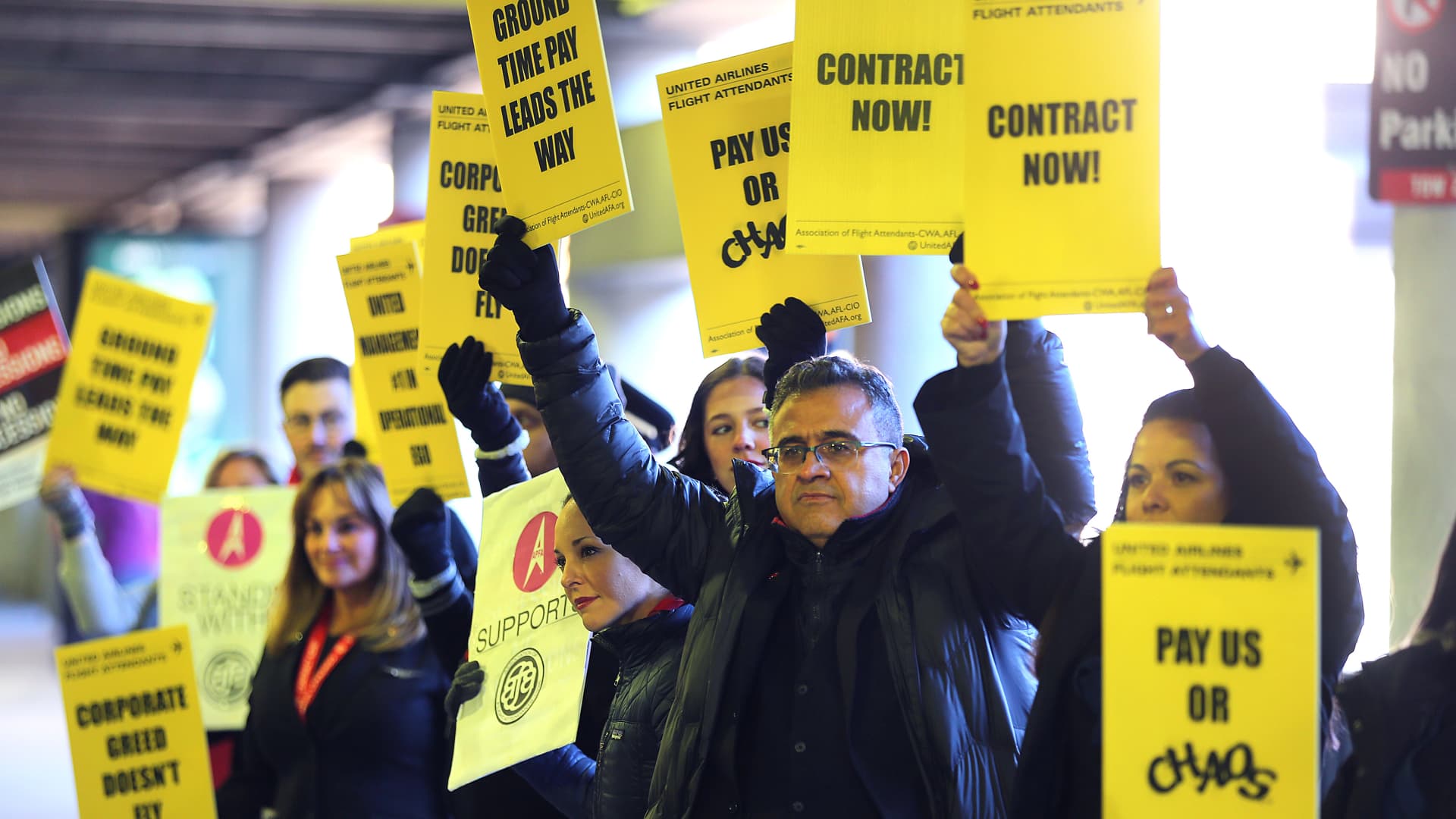United Airlines Flight Attendants: Toward an Industry-Leading Contract
The recent developments in labor negotiations between United Airlines and its flight attendants represent a significant moment in the aviation sector’s ongoing dialogue on fair compensation and working conditions. Flight attendants at United Airlines, represented by the Association of Flight Attendants-CWA (AFA-CWA), have edged closer to securing what the union describes as an “industry-leading” labor deal after years of protracted negotiations and escalating tensions.
Background: Years of Waiting and Collective Pressure
United Airlines flight attendants had been working under terms last renegotiated in 2016, with contract amendability starting August 2021. Despite their central role in passenger service and airline operations, United flight attendants had not received a raise since 2020. This lack of wage increases, combined with the rising cost of living and increasing work demands, led to widespread dissatisfaction.
The union members demonstrated a robust level of collective action. In May 2025, an overwhelming 99.9% of flight attendant union members voted to authorize a strike, signaling their readiness to take decisive action if their demands were not met. This pressure intensified negotiations, contributing to the tentative agreements announced in May 2025.
Key Terms of the Tentative Agreement
The tentative labor agreement, reached between United Airlines and the AFA-CWA and announced publicly in May 2025, promises to deliver significant gains in multiple areas:
– Industry-Leading Compensation: The contract reportedly includes wage increases that position United’s flight attendants at the top of pay scales within the industry. The deal emphasizes “40% of total economic improvements” in the initial phase of the contract, signaling substantial financial benefits.
– Signing Bonus: Flight attendants will receive a signing bonus upon ratification, providing immediate tangible rewards recognizing their patience through the negotiation process.
– Quality of Life Enhancements: Improvements covering hotel conditions, scheduling flexibility, reserve duty standards, and overall work-life balance form a crucial part of the deal. These aspects address long-standing concerns about the difficulties of flight attendant scheduling and working environments.
– Retroactive Pay: Addressing the multi-year period without salary increases, the agreement includes provisions for retroactive compensation, acknowledging the value missed during the protracted negotiation timeframe.
These advancements come after approximately four years of bargaining, reflecting both the complexity and intensity of discussions driven by the union’s determination and company negotiations.
Wider Context: Labor Relations Across United Airlines and the Industry
This tentative agreement follows similar contract discussions with other United Airlines employees, notably pilots and ground workers. Pilots recently reached a $10 billion labor deal that includes pay raises between 34.5% and 40.2% over four years. Additionally, nearly 30,000 ground workers secured “industry-best” wages and strong job protections under newly negotiated contracts.
The strategic timing coincides with a period of economic recovery and sector profitability post-pandemic. United Airlines reported bumper earnings and announced over 5% profit-sharing bonuses for flight attendants. However, despite the financial gains of the company, some flight attendants initially responded with frustration over perceived disparities in profit distribution, amplifying their resolve for better contracts.
Concurrent national trends reveal a surge in union activism among airline personnel. Major carriers are negotiating labor agreements for over 120,000 unionized staff, including flight attendants, maintenance workers, and pilots nationwide. Unions have employed negotiation leverage through authorized strikes and public demonstrations, exemplified by United flight attendants’ near-unanimous strike authorization and their visible picketing activities at major hubs.
Challenges and Controversies
While the deal is hailed as “industry-leading,” it has not been without challenges. Some flight attendants criticized United Airlines for demanding concessions amid talks, reflecting ongoing tensions regarding benefits versus operational demands. Moreover, the long delay in reaching any agreement underscored the difficulty in balancing corporate cost controls with employees’ calls for fair compensation and improved working conditions.
There was also concern that any concessions, especially related to scheduling or reserve duty, might not fully offset the fatigue and stress endemic in the profession. The current measures to improve quality of life, although promising, may need continual refinement to meet evolving workforce expectations.
Next Steps: Ratification and Future Outlook
The tentative agreement still requires final contract language completion and ratification by the AFA’s Master Executive Council and the broader membership. Meetings scheduled for late May 2025 aim to review the full terms before members cast their votes to approve or reject the deal.
If ratified, this agreement will set a new benchmark in labor contracts for flight attendants, potentially influencing negotiations at other airlines. It may also foster a more stable labor environment at United, reducing the risk of disruptive strikes and enhancing employee morale.
Impact and Significance
This agreement marks a landmark victory in labor relations within the airline industry. It demonstrates how persistent union advocacy coupled with strategic public pressure can yield significant gains, even against the backdrop of corporate profit maximization objectives.
By securing industry-leading pay and improved working conditions, United Airlines flight attendants affirm their essential role in airline service delivery. The contract addresses not only compensation but also pivotal quality of life matters, indicating a more holistic approach to workforce well-being.
Moreover, these gains contribute to broader labor movement momentum across U.S. airlines, encouraging other unions to pursue similar outcomes amid a recovering travel sector.
Conclusion: A Turning Point in Flight Attendant Labor Relations
United Airlines flight attendants’ nearing tentative contract agreement reflects years of steadfast union efforts to address longstanding inequities in pay and working conditions. The brisk move from near strike authorization to an “industry-leading” deal underscores the potency of collective bargaining in a vital part of the airline workforce.
If ratified, the contract will set a historic precedent, blending substantial economic improvements with meaningful quality of life advances. This pact not only rewards flight attendants’ dedication and resilience but also reshapes the landscape of airline labor relations as the industry navigates a new era of growth and workforce expectations.
United’s flight attendants, with a deal well within their grasp, are poised to shift their future from contention toward collaboration, fostering a more equitable and supportive working environment high above the clouds.





